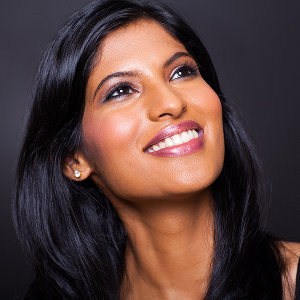Intro to Skin Type
Do you know your Skin Type? Don’t worry if you don’t. Most people have no idea. This is a difficult question to answer. It’s even difficult for professionals. Ask 5 estheticians, and you might get 5 different answers.
When you hear the term Skin Type, you probably think of: Normal, Oily, Dry, and Combination. Or some variation of that.
This is the most basic and most common classification system used in the skin care industry. Many brands base their product lines along these skin type categories.
But this system is quite limiting. Skin doesn’t conveniently fall into these few categories. There are other things going on in the skin. Other dimensions such as tendency for pigmentation, tendency for scarring, reactivity of skin, amount and type of wrinkling, elasticity, and skin thickness.
Recognizing the need for a more precise tool, various dermatologists and estheticians have presented alternative classification systems over the years. But none have become the industry standard. So today, we are still stuck with the basic Normal, Oily, Dry, and Combo scale.
I’d like to go over some fundamentals about Skin Type that you should know.
Skin Type vs Skin Condition
First, let’s discuss the meaning of Skin Type versus Skin Condition. I’ll be using these terms a lot on this site. It’s importance to know there is a difference.
Skin Type is what you are born with. It is genetically determined. You cannot change your Skin Type.
Examples of Skin Type (common terms):
- Normal
- Oily
- Dry
- Combination-Oily
- Combination-Dry
- Sensitive
- Acneic
Skin Condition can change at any time. It is affected by environment and lifestyle factors such as exposure to sunlight, stress, hormone levels, diet, smoking, alcohol, physical location, climate, medications, product usage, disease, and more.
Examples of Skin Conditions:
- acne
- comedones (blackheads & whiteheads)
- congestion (bumpiness under the surface of skin)
- dehydration
- fine lines & wrinkles
- sagging skin
- rough skin texture
- puffiness & baggy eyes
- undereye dark circles
- hyperpigmentation & hypopigmentation
- redness & dilated capillaries
- rosacea
- eczema
- psoriasis
How Is Skin Type Measured?
There are multiple ways to analyze skin. And multiple ways to measure skin type.
At this point, I’ll discuss one basic method of measuring Skin Type, which is by looking at:
- Pore Size
- Amount of Oil Production
Pore Size
Pore size varies across individuals, as well as within the face. For instance, on most skin types, pores tend to be larger and more visible on the nose.
Pore size is genetic. You cannot change your pore size. Don’t believe any product that claims to reduce your pore size. Because it’s impossible. Products can give the appearance of smaller pore size (by clearing out congestion in the pores), but it cannot actually make pores smaller.
Pore vs Follicle
By the way, the term ‘pore’ is technically incorrect. The correct term is ‘follicle.’
- A pore is the opening where sweat flows out.
- A follicle is the opening where oil (sebum) flows out.
They are two entirely different openings. Sweat and oil do not flow out of the same duct. Sweat pores and sebaceous follicles are interspersed throughout the skin.
Hair Follicle vs Hairless Follicle
A follicle may contain a strand of hair. That is known as a hair follicle. Or the follicle may be hairless.
Both men and women have hair follicles on the face. It is obvious on men as they have very visible facial hair. But women have hair follicles all over their face too. The hairs are just really tiny and downy (called vellus hair).
When we talk about pores in facial skin care, we mean follicles – where sebum, not sweat, comes out. However, everyone uses the term ‘pore.’ It’s shorter and easier to say than ‘follicle,’ so we’ll stick with the term ‘pore.’
Oil (Sebum) Production
Attached to the follicle is the sebaceous gland, which produces the oil (sebum) that flows out of the follicle. That oil is used to lubricate your skin, protect it from outside elements, and slow down water loss (transepidermal water loss).
This is why it’s not a good idea to over-cleanse skin or use harsh cleansers. It can strip skin of the oil that is essential for protection and lubrication. It can also dehydrate skin by accelerating water loss.
Sebum production is regulated by hormones.
Some people naturally produce more sebum. Excess sebum production leads to oily skin.
Some people naturally produce less sebum. A lack of sebum is characteristic of dry skin.
When we age, our sebum levels decrease, which is why our skin gets drier.
Basic Skin Types
Here are the general characteristics of the (very) basic skin type classification system that you are likely to come across.
Try determining your skin type by asking yourself these 2 questions:
1) Can I see my pores?
2) When do I see shine on my face?
Normal
- Small to medium-sized pores
- Pores are visible in the T-zone
- Shine (if any) appears at the end of day
 Oily
Oily
- Large pore size
- Pores are visible throughout the face
- Shine appears early in the day (typically first thing in the morning)
Dry
- Pores are very small or not visible
- No oil
Combination: Oily-Normal
- Oily T-zone, normal cheeks
- Medium to large-sized pores
- Pores are visible on the nose & inner cheeks
- Shine appears in the middle of the day
 Combination: Dry-Normal
Combination: Dry-Normal
- Normal T-zone, dry cheeks
- Very small pore size
- Shine (if any) appears at the end of day
Acneic
- Active breakouts everywhere on the face & body
- Often red & sensitized
Sensitive
- Tightness
- Red & blotchy
- Prone to stinging, itching, and blushing
- Prone to dry, flaky patches
- Skin may be thin and translucent (typical among Northern Europeans)
When Skin Type Can Be A Skin Condition Too
Acneic Skin
Acne can be both a Skin Type and a Skin Condition.
Acneic skin is genetically inherited. It is a disorder of the sebaceous glands. Acneic skin is characterized by active, persistent breakouts, red and sensitized skin, acne on the body (neck, chest and back) in addition to the face, early onset of acne (during puberty), and family members with acne. A family history of acne coupled with the above characteristics is a strong indicator of the acneic skin type.
You can also have acne without being an acneic skin type. Many adults, especially women, get ‘adult acne.’ This is typically caused by stress, changing hormone levels, and the menstrual cycle. Occasional breakouts on the face is considered a skin condition.
Sensitive Skin
Like acne, sensitive skin can be both a Skin Type and a Skin Condition.
 The sensitive skin type is thin, fragile skin that is often red. It flushes easily because the skin is thinner and the blood flows closer to the surface of skin (hence why it appears more red). It is easily irritated by products and easily stimulated by heat and light.
The sensitive skin type is thin, fragile skin that is often red. It flushes easily because the skin is thinner and the blood flows closer to the surface of skin (hence why it appears more red). It is easily irritated by products and easily stimulated by heat and light.
Among Northern Europeans, sensitive skin is typically thin, translucent, freckled and shows capillaries. Darker skin types can be sensitive too, though it is less obvious visually.
The sensitive skin condition is different from the sensitive skin type. Skin may become sensitive if it has been sensitized from exposure to harsh products, certain chemicals, allergens, heat, or cold weather. Anyone’s skin can become sensitized.
I’ll talk more later about sensitive skin, in particular environmental sensitization. It’s a condition that is affecting more and more people.
